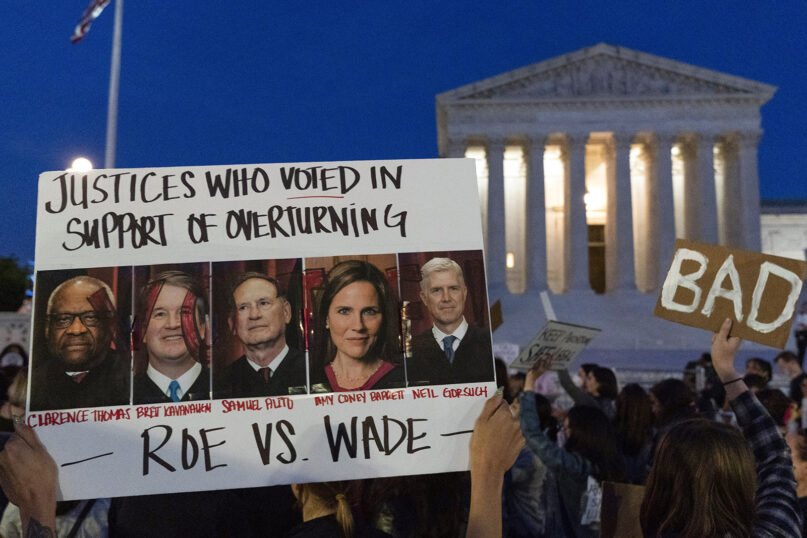(RNS) — “No wonder this stuff’s getting so damn popular,” exclaims Shirley to her friend Joan at the start of George Romero’s 1972 film “Hungry Wives.” Joan and Shirley, two neglected middle-age suburban housewives, are on their way to a tarot reading.
What’s getting “so damn popular” is witchcraft.
“The religion offers a retreat” for repressed women, Shirley notes, adding, “Christ, what other kind of women are there?”
Hollywood loves this narrative of abused women turning to witchcraft for strength and survival. One of the first retellings is in Frank Tuttle’s 1923 silent film “Puritan Passions,” a cinematic adaptation of Percy MacKaye’s play “Scarecrow,” which is an adaptation of Nathanial Hawthorne’s “Feathertop.” A woman scorned by society and abandoned by a man retires to a reclusive life in the woods to practice witchcraft.
Lola of “Damned Yankees” (1959), Jess Belle of “The Twilight Zone” (1963), and Edna Mae in “Resurrection” (1980) all turn to magic after being rejected by their communities for one reason or another. The mid-1990s saw “The Craft” (1996) and the 2010s saw “The Conjuring” (2013). More recently, films like “The Love Witch” (2016) and shows like “Salem” (2014-2017) capture the same story: Witchcraft empowers a woman (or women) scorned.
This narrative, however, is not just silver-screen fantasy. Magic has always been, in lore and in life, a tool of the oppressed. And, in today’s political climate, some modern practitioners predict a new wave of interest in the craft. There are already signs that the current rash of anti-LGBTQ+ legislation, overtly racist rhetoric and violence and, of course, the dismantling of Roe v. Wade, have boosted the attractiveness of magic among women, people of color and other marginalized individuals.
“I fear women are becoming invisible again and will increasingly lose control over their own lives,” said Candace C. Kant, professor emerita of history and chair of the department of theology and religious history at Cherry Hill Seminary, an educational institution focused on paganism and earth-based religions.
“When you are looking at something like witchcraft, it moves outside of traditional patriarchal institutions and is more accessible to women and other oppressed peoples,” Kant explained. When barred from mainstream social or religious roles, the socially ostracized turned to their own rituals, often coming together to pray or effect change, said Kant.
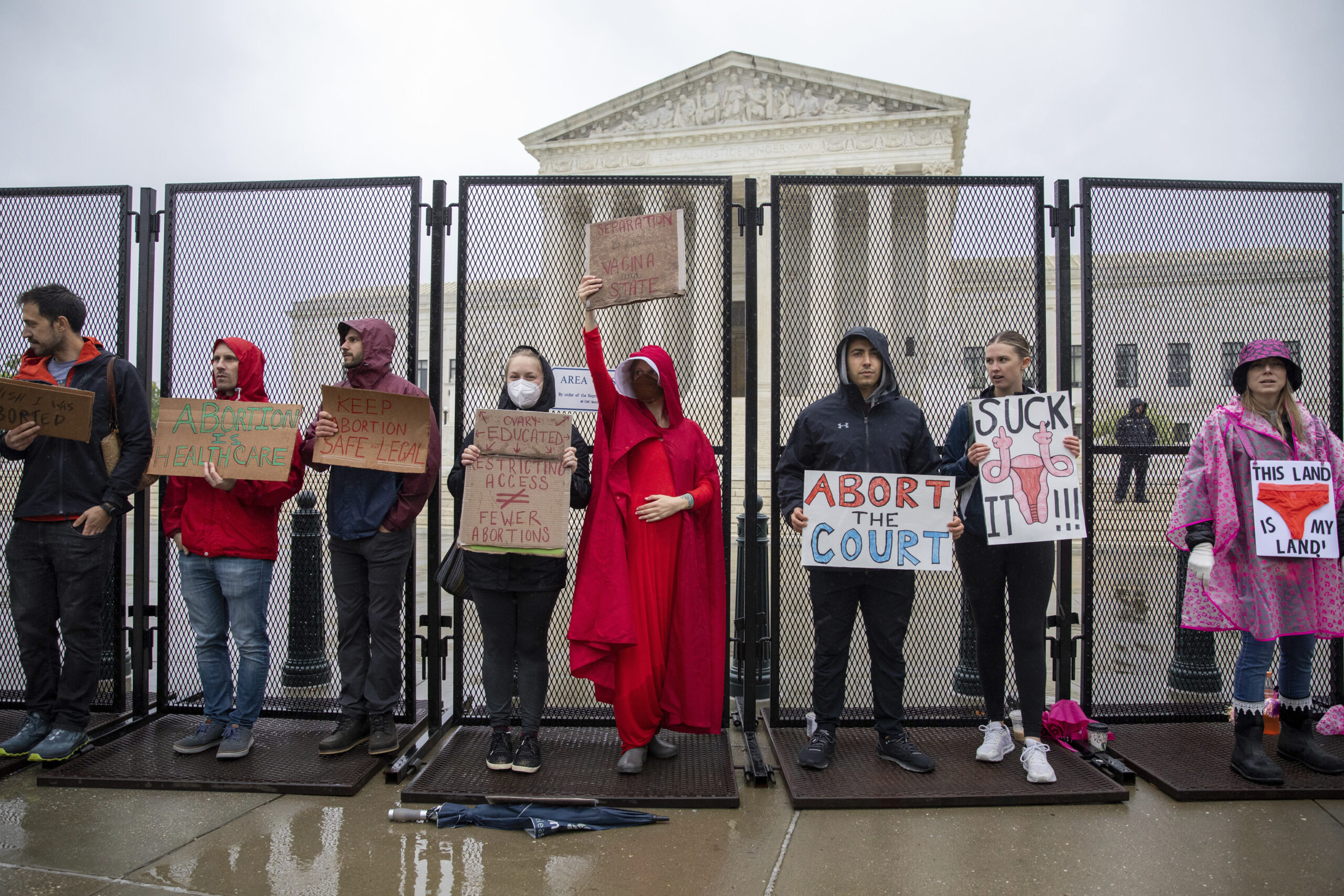
Abortion-rights protesters hold signs during a demonstration outside of the U.S. Supreme Court, May 7, 2022, in Washington. (AP Photo/Amanda Andrade-Rhoades)
It has worked both ways, of course. Women may turn to witchcraft when times get tough, but often any activity that a woman embraces in such times becomes demonized. In fact, the term witchcraft has been historically applied to all kinds of spiritual activities of marginalized people. Similarly, the word ‘witch’ itself was, and still is, thrown at any defiant or independent woman.
In her new book “In Defense of Witches,” French journalist Mona Chollet suggests women have come to embrace the epithet. Take, for example, a 1960s radical feminist group named W.I.T.C.H. — the Women’s International Terrorist Conspiracy from Hell — to capitalize on this ideology. “The witch embodies woman free of all domination, all limitation,” Chollet writes. “She is an ideal to aim for; she shows us the way.”
It is this legacy of independence and social defiance that sits at the heart of modern witchcraft and led to its rebirth into a modern, and increasingly popular, alternative religion.
During first-wave feminism, suffrage and the abolitionist movements, spiritualism rose in popularity with its own brand of magic and mysticism, including tarot cards, spirit boards and many forms of folk magic. Then, in the 1960s and 1970s, the modern American witchcraft movement was born alongside second-wave feminism and the civil rights movement. Many of today’s largest witchcraft organizations, such as Covenant of the Goddess and Circle Sanctuary, were established during this cultural revolution.
“Ever since Wicca arrived in the United States in the 1960s, it has been growing — sometimes by leaps and bounds, and other times more slowly,” said Helen Berger, resident scholar at Brandeis University. Another leap came in the mid-1990s with third-wave feminism, which was a direct reaction to the conservative 1980s Reagan era, a cultural backlash against women and the Satanic Panic.
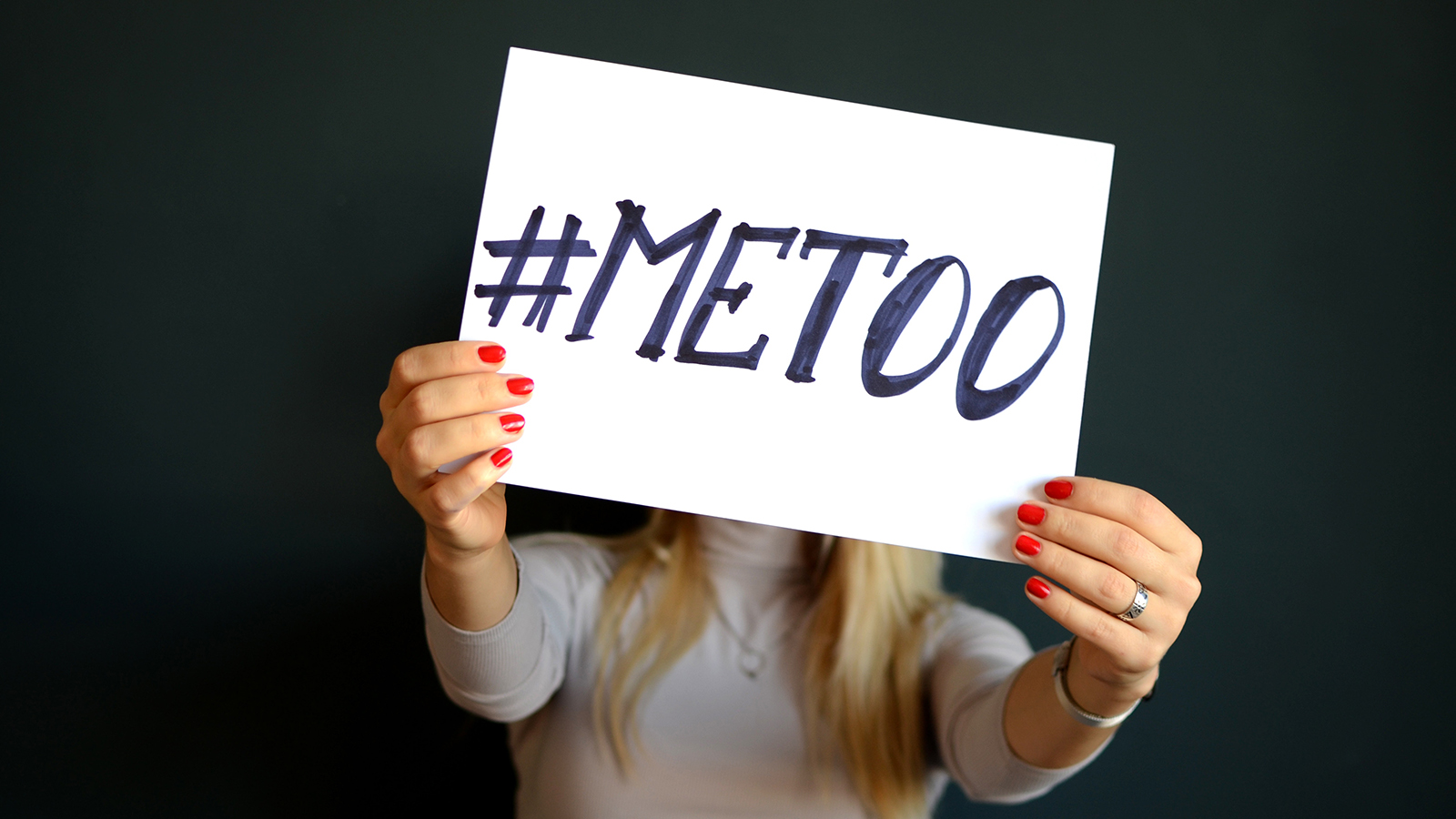
A woman holds a #MeToo sign. Photo courtesy of Creative Commons
Today, witchcraft is finding new life once again — spiritually and politically. At #MeToo rallies, some protesters — just as in the 1960s — use the title witch purely as a radical act, wearing black pointy hats and holding signs that read: “We are the daughters of the witches you could not burn.” Berger, however, estimates there are 1.5 million actual practicing witches in the U.S. today. And that number is growing.
Similarly, hoodoo, a set of uniquely American folk-magic traditions, practiced predominantly by Black Americans of all genders, has also seen renewed popularity in the wake of increasingly overt racist rhetoric and violent hate crimes.
Not a religion, hoodoo finds its origins in the resilience and culture of enslaved peoples. “The old folks who set the tone for hoodoo wanted justice of all types, and they took matters into their own hands,” writes Stephanie Rose Bird in “365 Days of Hoodoo.” The practice still thrives in communities around the country and combines African traditions with other adopted practices, including aspects of Christianity and Indigenous healing practices.
“Unfortunately people are still being unfairly persecuted,” said Lilith Dorsey, M.A., a New Orleans Voodoo priestess and witch. “When we first saw people protesting for George Floyd and against all those wrongful deaths, we also saw a great rise in people calling for these types of methods.”
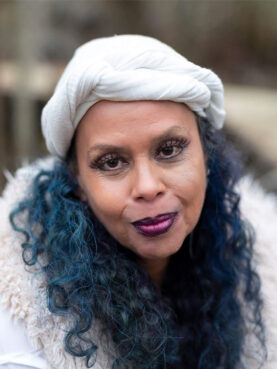
Lilith Dorsey. Courtesy photo
Dorsey, author of “Orishas, Goddesses, and Voodoo Queens,” has been practicing hoodoo since she was a child growing up in New York City, describing it as “a social justice equalizer for BIPOC.”
In a May 4 post on her popular blog Voodoo Universe, Dorsey offered several Hoodoo spells for activists, including cinnamon for invisibility, blue salt for protection, and Hi-John, perhaps the most well-known Hoodoo root, for support in court cases.
Hoodoo is very situational. You use “what you have at hand,” Dorsey explained. It relies heavily on ancestral knowledge, harkening back to its origins. Enslaved peoples, she said, lived under extreme conditions, needing to rely on whatever they had for health, prayers and even survival.
Dorsey is concerned about the upcoming ruling on Roe v. Wade. “We could wind up back in a situation where people have to seek out alternative solutions,” including “specific herbs and rituals.”
Lou Florez, a professional rootworker and brujo in California, is already receiving such calls from concerned members of his community about the future of reproductive health and access to adequate medical care. “These issues are more than just fodder for intellectual debate,” he said.
Brujes, like witches, hoodoos, and other medicine makers, “have held historical roles in the struggles of reproductive sovereignty,” said Florez, who practices Hoodoo alongside other forms of magic.
Magical workers are being “called to reactivate their networks in order to politically and spiritually counter these intentionally created injustices,” Florez said.
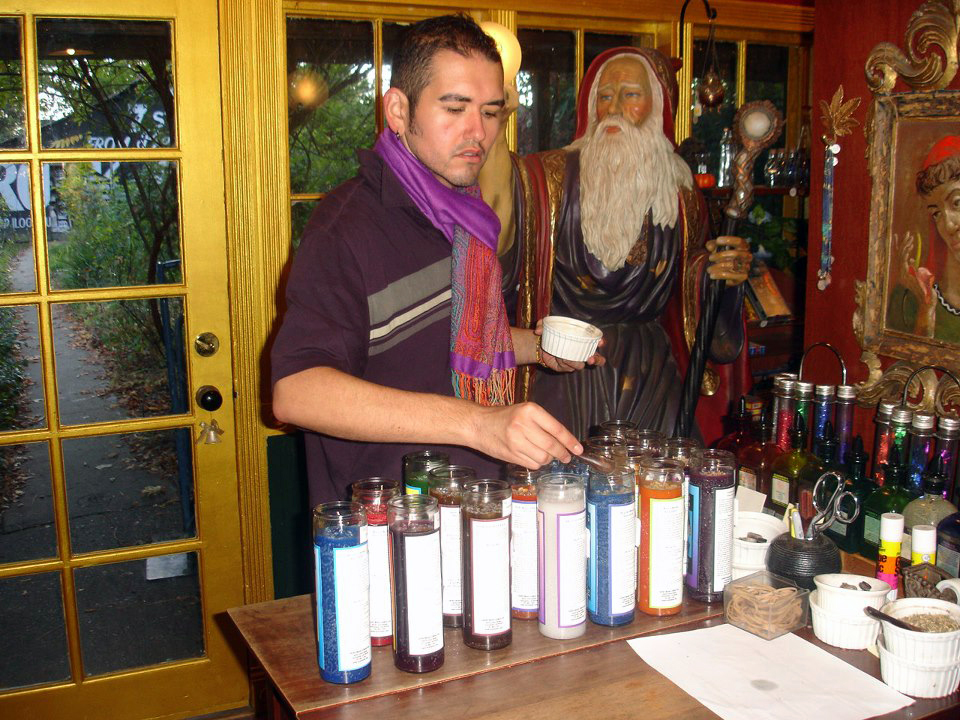
Lou Florez, a professional rootworker and brujo in California, dresses candles for magical use. Photo courtesy of Lou Florez
Kant has also been hearing similar worries within her witchcraft circles. “There’s a lot of talk that maybe we need to bring back some of the old avenues, such as herbal remedies. We may have to rely on those again,” she said.
“It is a shame that this is where we are back to after this many years,” she added.
Not everyone who practices modern witchcraft, hoodoo or other magical traditions has experienced abuse or oppression. These are not features or requirements. Both modern witchcraft and hoodoo offer rich and vibrant spiritual experiences, not simply a path to survival or combatting injustice.
However, a rebellious spirit runs through their origin stories, making them popular in today’s unstable social climate, where an increasing number of people feel disenfranchised, disconnected and discarded.
In 2020, filmmaker Zoe Lister-Jones reinvigorated the spirit of the 1990s cult film “The Craft” for a new generation. The sequel, called “The Craft: Legacy,” depicts once again four marginalized teens turning to witchcraft for self-empowerment. But in this updated version, the teens also end up using magic to take down the film’s oppressive male villain, aka the patriarchy personified.
As Shirley said to Joan at the start of Romero’s film, “No wonder this stuff’s getting so damn popular.”
Ninety minutes and many scenes later, Joan catches back up with Shirley at a cocktail party. Smugly sipping her martini, she says, “I am a witch,” and then the film credits roll.
